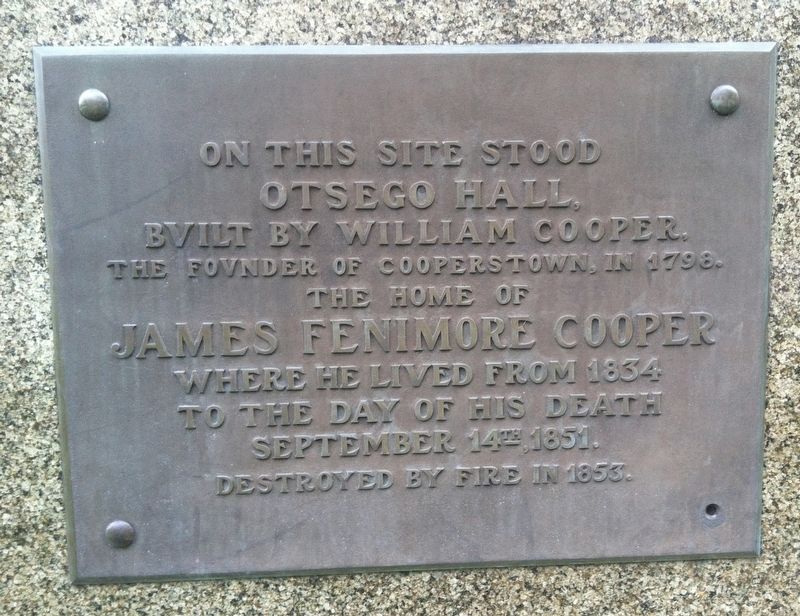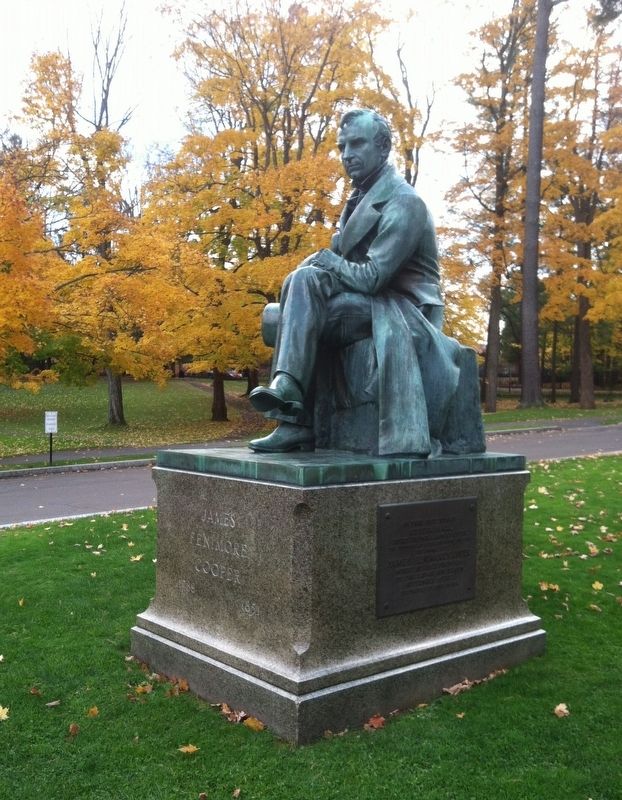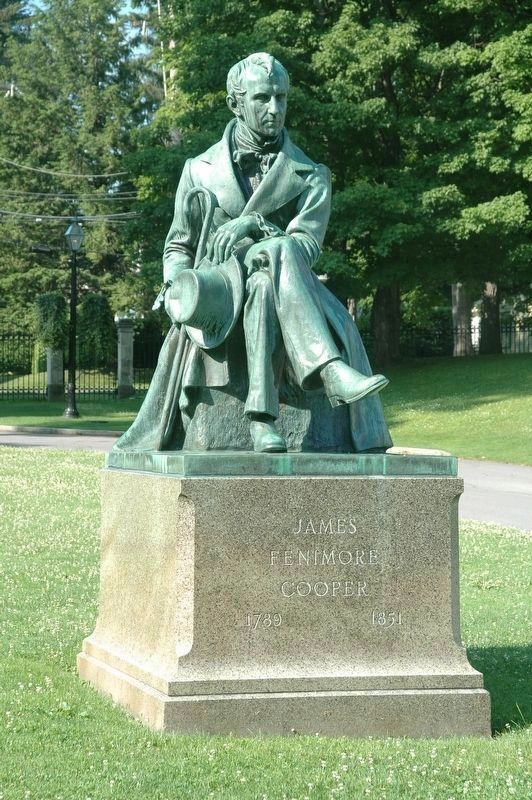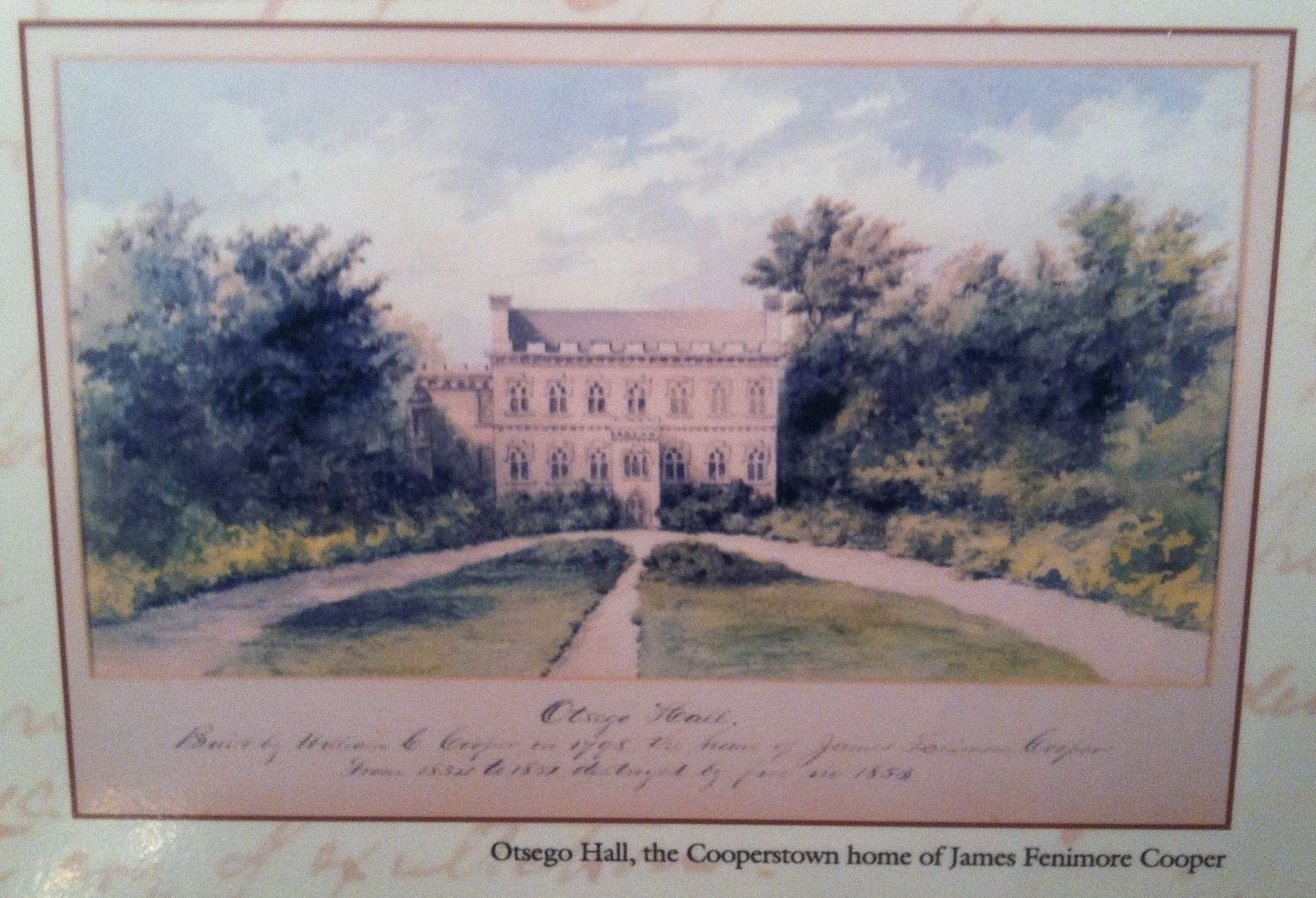Cooperstown in Otsego County, New York — The American Northeast (Mid-Atlantic)
Otsego Hall
The Home of James Fenimore Cooper
Otsego Hall,
Bvilt By William Cooper,
The Fovnder Of Cooperstown, in 1798.
The Home Of
James Fenimore Cooper
Where He Lived From 1834
To The Day Of His Death
September 14th, 1851.
Destroyed by Fire in 1853.
Erected 1940.
Topics. This historical marker is listed in these topic lists: Arts, Letters, Music • Settlements & Settlers. A significant historical date for this entry is September 14, 1851.
Location. 42° 41.958′ N, 74° 55.375′ W. Marker is in Cooperstown, New York, in Otsego County. Marker is on Fair Street, in the median. Touch for map. Marker is in this post office area: Cooperstown NY 13326, United States of America. Touch for directions.
Other nearby markers. At least 8 other markers are within walking distance of this marker. George Croghan (about 300 feet away, measured in a direct line); Site of the First National Baseball Hall of Fame Induction (about 300 feet away); Fair Street (about 400 feet away); Hoffman Lane (about 400 feet away); Pomeroy Place (about 500 feet away); Pioneer Alley (about 500 feet away); Susan B. Anthony (about 600 feet away); Emancipation Day (about 600 feet away). Touch for a list and map of all markers in Cooperstown.
Regarding Otsego Hall. Located in the village of Cooperstown between present-day Main and Church Streets, Otsego Hall was built by William Cooper in 1799 and was the largest house west of Albany for many years. After the death of William Cooper and his widow, the mansion was vacant for many years. In June 1834, James Fenimore Cooper resolved to reopen the house after an absence of nearly sixteen years. The building had been long closed and falling into decay. He had it remodeled in a castellated Gothic style. The ceiling on the first floor was raised from ten feet to thirteen feet. Also Gothic windows and battlements were installed. In this, Cooper was assisted by his friend, Samuel F. B. Morse, a painter and inventor, who designed two towers for the front and east sides of the structure. At first, Cooper spent his winters in New York City and summered in Cooperstown, but eventually he made Otsego Hall his permanent residence. Cooper died in 1851, and after the family sold it, the mansion burned down in 1853, and the surrounding property was sold by the heirs. His daughter, Susan Fenimore Cooper, built a house in Cooperstown, made mainly of bricks and material salvaged from the ruins of Otsego Hall. The lot remained vacant until 1897, when it was dedicated as a public park called the Cooper Grounds by Mrs. Alfred Corning Clark.
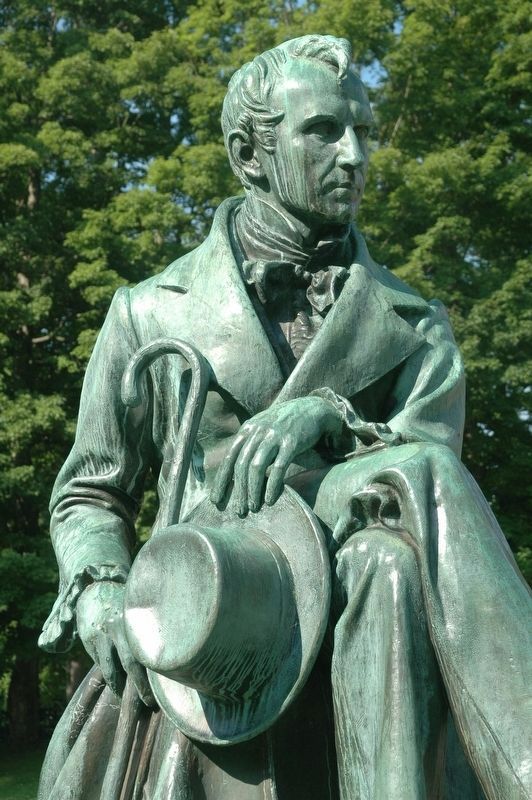
Photographed By Howard C. Ohlhous, July 5, 2018
4. James Fenimore Cooper Statue - Detail
A portrait of novelist James Fenimore Cooper (1789-1851) sitting on a block with his legs crossed, right over left leg. In his right hand he holds a cane. His left arm is draped over his right knee and in his left hand he holds a wide-brimmed hat. He wears a long overcoat, a shirt with ruffled cuffs, and a bow tie. The sculpture rests on a rectangular base of polished stone, with a plaque mounted on the west side, which faces the Baseball Hall of Fame. The sculpture was made by Victor Salvatore (1885-1965) who was a sculptor, painter, and teacher who lived in New York City and in Springfield Center, a village north of Cooperstown on Otsego Lake. Salvatore also made the statue of the Sandlot Kid, located next to Key Bank on Main Street in Cooperstown.
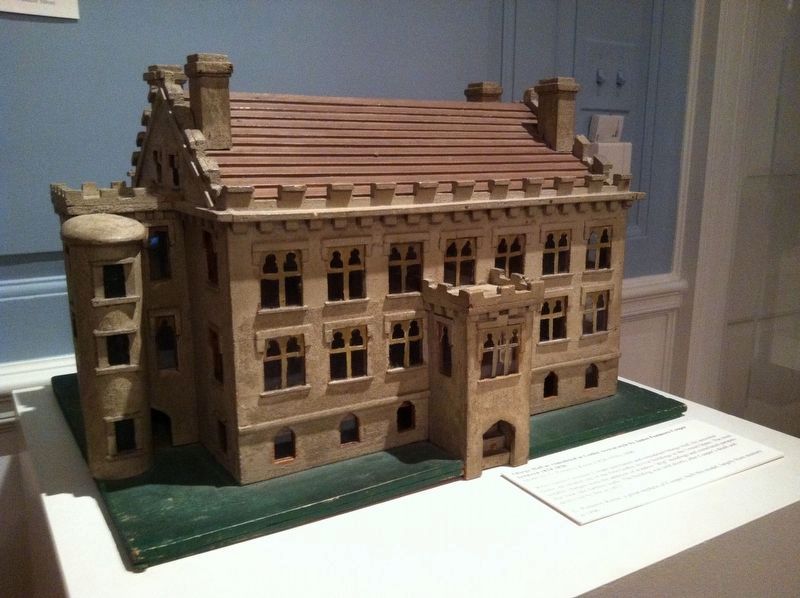
Photographed By Howard C. Ohlhous, October 22, 2016
6. Otsego Hall
When James Fenimore Cooper purchased and remodeled Otsego Hall, his ancestral home, he created one of the first Gothic revival buildings in the United States. The most notable changes were the addition of window "drip" moldings and crenellated parapets that look like fortress walls. This model was created by George Pomeroy Keese (1828-1910), a great-nephew of Cooper, largely from memory in 1896 and is on display in the Fenimore Art Museum.
Credits. This page was last revised on December 14, 2020. It was originally submitted on August 6, 2018, by Howard C. Ohlhous of Duanesburg, New York. This page has been viewed 760 times since then and 93 times this year. Photos: 1, 2, 3, 4, 5, 6. submitted on August 6, 2018, by Howard C. Ohlhous of Duanesburg, New York. • Andrew Ruppenstein was the editor who published this page.
